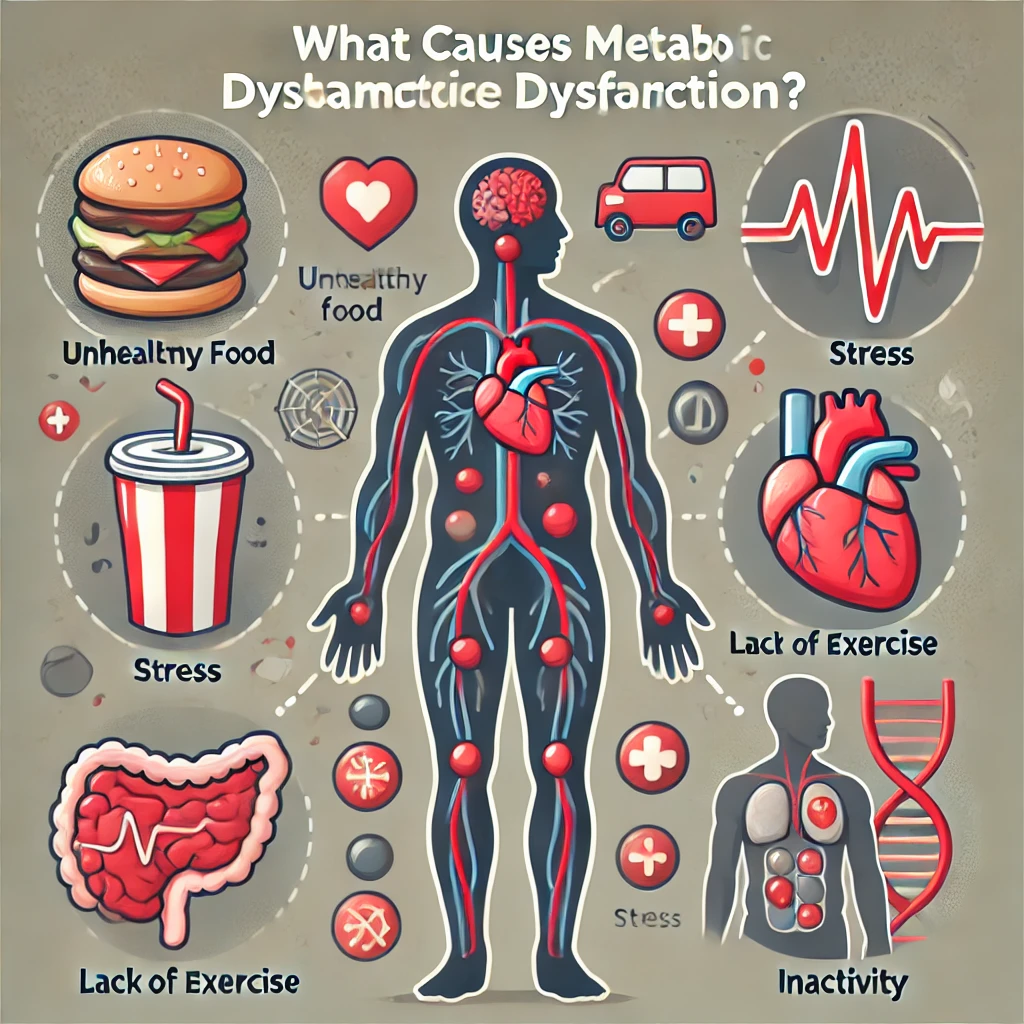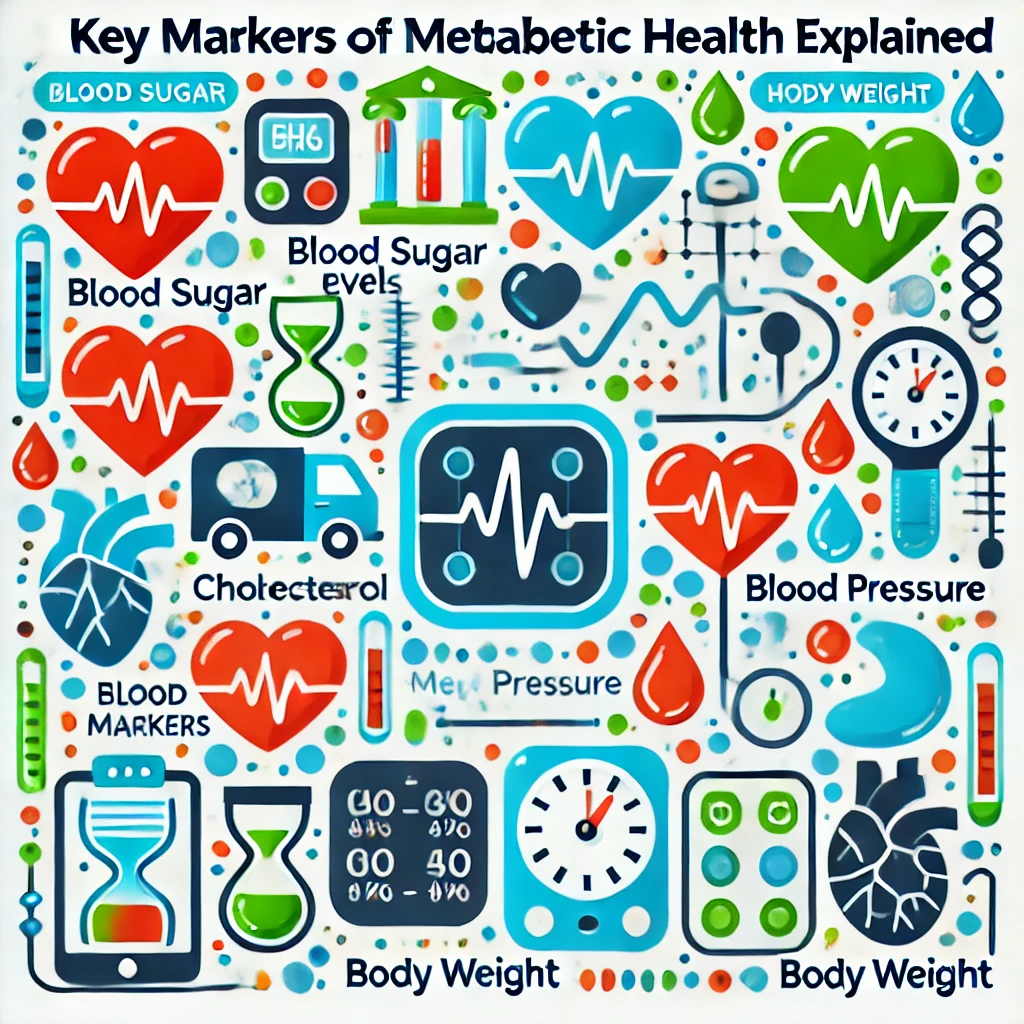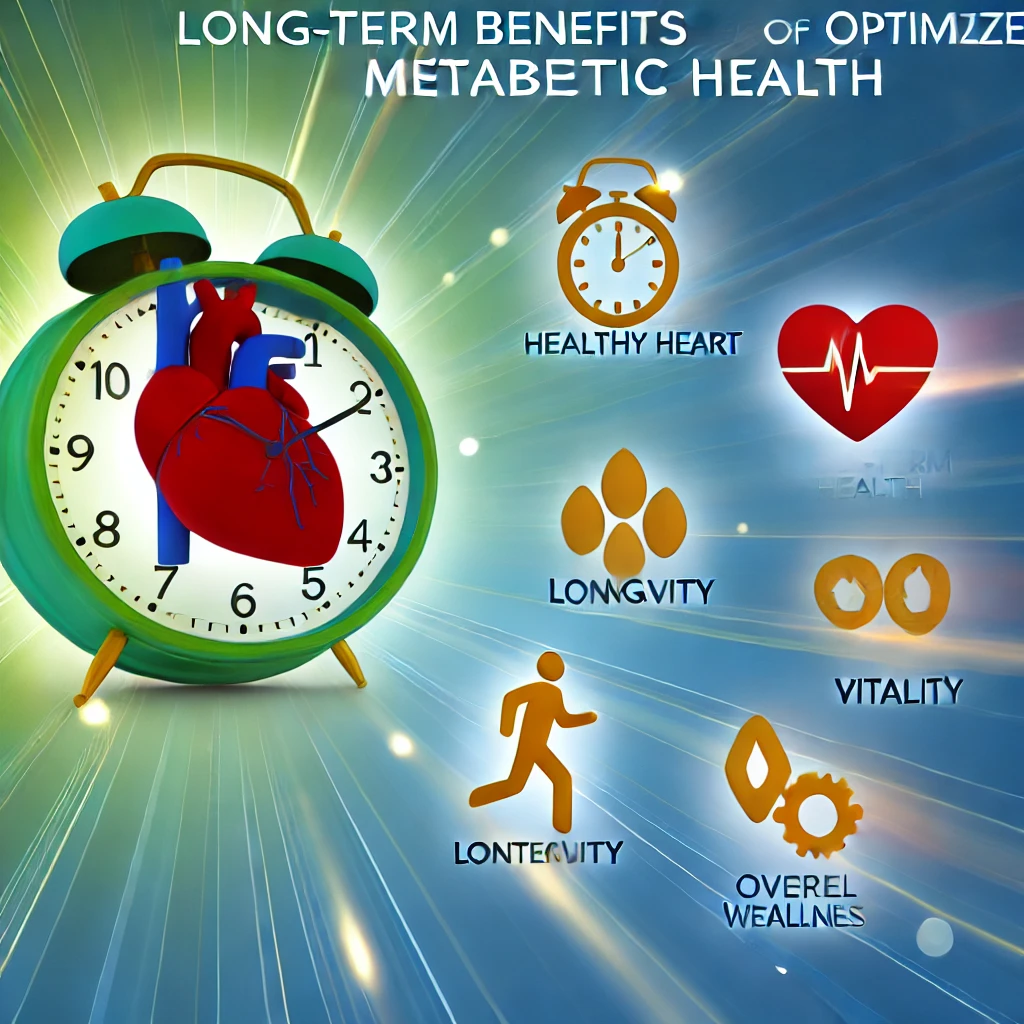
Nourishing With Hygienic Food
Lorem ipsum dolor sit amet, consectetur adipiscing elit. Vivamus eget semper sem. Quisque sed convallis quam.


About us
We advise you to prevent disease with nutrition for healthy life.
Lorem ipsum dolor sit amet, consectetur adipiscing elit. Vivamus eget semper sem. Quisque sed convallis quam. Nulla lacinia massa non orci mollis lacinia.



Balance Body & Mind
Lorem ipsum dolor sit amet, consectetur adipiscing elit.

Fitness & Performance
Lorem ipsum dolor sit amet, consectetur adipiscing elit.
We advise you to prevent disease with nutrition
We have 20 years of nutrition and fitness health experience globaly, work with professionals
Lorem ipsum dolor sit amet, consectetur adipiscing elit. Vivamus eget semper sem. Quisque sed convallis quam. Nulla lacinia massa non orci mollis lacinia.

Personalized
Nutrition Plan

Personalized
Exercises Plan

Our Services
Provide Best Services


Balance Body & Mind
Lorem ipsum dolor sit amet, consectetur adipiscing elit. Vivamus eget semper sem.


Personalized Nutrition
Lorem ipsum dolor sit amet, consectetur adipiscing elit. Vivamus eget semper sem.


Fitness Performance
Lorem ipsum dolor sit amet, consectetur adipiscing elit. Vivamus eget semper sem.
Health Problems We Support
Lorem ipsum dolor sit amet, consectetur adipiscing elit. Diam id mi facilisi pretium. Tellus
diam condimentum nunc volutpat blandit. Nunc odio diam venenatis sit tincidunt.

Weight Loss
Lorem ipsum dolor sit amet, consectetur adipiscing elit. Nulla ut nisi varius, convallis justo placerat, gravida enim. Nulla et hendrerit ligula.

Autoimmune Conditions
Lorem ipsum dolor sit amet, consectetur adipiscing elit. Nulla ut nisi varius, convallis justo placerat, gravida enim. Nulla et hendrerit ligula.

Digestive Issues
Lorem ipsum dolor sit amet, consectetur adipiscing elit. Nulla ut nisi varius, convallis justo placerat, gravida enim. Nulla et hendrerit ligula.

Hormonal & Fertility Issues
Lorem ipsum dolor sit amet, consectetur adipiscing elit. Nulla ut nisi varius, convallis justo placerat, gravida enim. Nulla et hendrerit ligula.

Skin Conditions
Lorem ipsum dolor sit amet, consectetur adipiscing elit. Nulla ut nisi varius, convallis justo placerat, gravida enim. Nulla et hendrerit ligula.

Complex Conditions
Lorem ipsum dolor sit amet, consectetur adipiscing elit. Nulla ut nisi varius, convallis justo placerat, gravida enim. Nulla et hendrerit ligula.

Mental Health
Lorem ipsum dolor sit amet, consectetur adipiscing elit. Nulla ut nisi varius, convallis justo placerat, gravida enim. Nulla et hendrerit ligula.

Prevention/Optimisation
Lorem ipsum dolor sit amet, consectetur adipiscing elit. Nulla ut nisi varius, convallis justo placerat, gravida enim. Nulla et hendrerit ligula.

Sports Nutrition
Lorem ipsum dolor sit amet, consectetur adipiscing elit. Nulla ut nisi varius, convallis justo placerat, gravida enim. Nulla et hendrerit ligula.
Our Simple Process
Lorem ipsum dolor sit amet, consectetur adipiscing elit. Diam id mi facilisi pretium. Tellus
diam condimentum nunc volutpat blandit. Nunc odio diam venenatis sit tincidunt.

Book a consultation
Book a call with us to discuss your issues and how we may sport you

Start your programme
Book a call with us to discuss your issues and how we may sport you

Implement in your life
Follow your meal plan, supplement plan, and recipes. We will help you make lifestyle change.

Experience new health results
Enjoy an improved life quality and feel confident and knowledgable in your own health.

Nutritonist
Vegetarian Diet

Weight Loss
Pilates Exercises

Health
Pregnancy Diet

Fitness
Physical Activity

Healthy
Eat Healthy Food

Fitness
Yoga For Strength
Blogs & Articals

Understanding Metabolic Health as the Key to Overall Well-Being
In today’s fast-paced world, we often take our health for granted until something goes wrong. Whether it’s weight gain, fatigue, or the onset of chronic conditions like diabetes or heart disease, the underlying cause is often tied to one critical aspect of our body—our metabolism. Metabolic health is the foundation upon which all other aspects of well-being are built. It dictates how efficiently our bodies convert food into energy, regulate blood sugar, manage fat storage, and maintain hormonal balance. When our metabolism functions well, we feel energized, maintain a healthy weight, and lower our risk of disease. But when it doesn’t, the effects can ripple through every system in our body, leading to a host of chronic issues.
In this article, we’ll explore the vital role that metabolic health plays in overall well-being, uncover the common causes of metabolic dysfunction, and provide actionable steps to help you restore and optimize your metabolic health. By understanding these concepts, you’ll gain the knowledge and tools to take control of your health before more serious conditions arise.

What is Metabolic Health?
Metabolic health refers to the body’s ability to efficiently process and convert food into energy while maintaining stable blood sugar levels, hormone regulation, and proper fat storage. Essentially, it's how well your body takes in nutrients, breaks them down, and uses them to fuel your cells, organs, and overall bodily functions.
Most people associate metabolism with weight gain or loss, but it goes far beyond that. Metabolic health influences everything from energy levels and mood to disease prevention and longevity. When your metabolism is functioning optimally, your cells receive the right amount of energy, and your body efficiently manages glucose and fat storage without excessive fluctuations. However, when metabolic health is compromised, it can lead to insulin resistance, inflammation, and the accumulation of visceral fat, which eventually progresses into chronic health issues.
Key Markers of Metabolic Health
Understanding metabolic health starts with knowing the markers that indicate how well your body is processing energy. Here are the main indicators used to assess your metabolic health:
Fasting Glucose:
Measures the amount of sugar in your blood after fasting for 8-12 hours. Stable glucose levels indicate proper blood sugar control and insulin sensitivity.
Hemoglobin A1c (HbA1c):
A measure of average blood sugar levels over the past 2-3 months. Elevated HbA1c is a sign of long-term poor blood sugar regulation, often associated with pre-diabetes or type 2 diabetes.
Fasting Insulin:
Determines how much insulin your body needs to produce to keep blood sugar levels normal. High fasting insulin indicates that your body is becoming resistant to insulin, an early sign of metabolic dysfunction.
Triglycerides:
Triglycerides are fats found in your blood. High levels often indicate that excess carbohydrates and sugars are being converted to fat, which is linked to poor metabolic health and an increased risk of heart disease.
HDL Cholesterol (High-Density Lipoprotein):
Known as the "good" cholesterol, HDL helps remove excess cholesterol from the bloodstream. Higher HDL levels are associated with better metabolic and heart health.
Waist Circumference:
This measurement is an easy way to gauge visceral fat, which is the fat stored around your organs. A larger waist circumference is linked to a higher risk of metabolic syndrome, type 2 diabetes, and cardiovascular diseases.
Blood Pressure:
High blood pressure often accompanies metabolic dysfunction and is a sign of insulin resistance and poor cardiovascular health. Healthy blood pressure levels are a critical component of overall metabolic health.

The Importance of Metabolic Health
While many people may focus on individual symptoms like weight gain or fatigue, these can be signs of an underlying metabolic issue. In fact, recent studies show that 93% of American adults have suboptimal metabolic health, meaning only a small portion of the population is metabolically healthy. Poor metabolic health is often a precursor to conditions like obesity, type 2 diabetes, heart disease, and even certain types of cancer.
Maintaining metabolic health is essential for disease prevention, long-term energy, and overall well-being. Understanding the key markers and how they influence your body allows you to take proactive steps toward improving your health, preventing future health complications, and living a more vibrant life.
What Causes Metabolic Dysfunction?

Metabolic dysfunction occurs when the body's ability to process and use energy is compromised. Instead of efficiently converting food into energy, the body begins to struggle with blood sugar control, fat storage, and hormone regulation. This dysfunction is often the result of modern lifestyle factors, environmental influences, and poor dietary habits, which place significant strain on our metabolic systems over time.
In this section, we’ll explore the primary causes of metabolic dysfunction and why understanding these triggers is crucial for reversing the damage and improving overall health.
1. Mitochondria's Role in Energy Production
At the core of metabolic health lies the mitochondria, the "powerhouses" of our cells. Mitochondria are responsible for converting the food we eat into usable energy through a process called cellular respiration. They are essential for everything from muscle movement to brain function.
When mitochondrial function is impaired, the body's ability to produce energy efficiently is compromised. This leads to fatigue, poor energy utilization, and increased fat storage, particularly around the organs (visceral fat). Over time, mitochondrial dysfunction contributes to the development of chronic diseases such as obesity, diabetes, and cardiovascular issues.
Factors That Impair Mitochondrial Function:
Chronic stress
Poor diet (high in processed foods and sugars)
Exposure to toxins and pollutants
Sedentary lifestyle
Lack of sleep
Supporting mitochondrial health through diet, exercise, and stress management is critical for restoring metabolic function.
2. Environmental and Lifestyle Factors
In today's society, many environmental and lifestyle factors negatively impact metabolic health. These factors contribute to insulin resistance, inflammation, and weight gain, which can spiral into metabolic dysfunction. Some of the key drivers include:
Poor Diet: The standard modern diet, rich in processed foods, sugars, refined carbohydrates, and unhealthy fats, is one of the main culprits behind metabolic dysfunction. These foods cause frequent spikes in blood sugar and insulin levels, leading to insulin resistance over time. A diet lacking in whole foods, fiber, and nutrients deprives the body of what it needs to maintain proper energy balance and regulate blood sugar.
Sedentary Lifestyle: Our bodies are designed to move, and when we don’t, our metabolism suffers. Prolonged sitting and inactivity reduce muscle engagement, slow down glucose uptake, and contribute to weight gain. In contrast, regular movement and exercise promote mitochondrial health, improve insulin sensitivity, and help burn excess fat.
Chronic Stress: Stress triggers the release of hormones like cortisol, which raises blood sugar levels to prepare the body for "fight or flight" mode. When stress becomes chronic, elevated cortisol levels lead to increased insulin resistance and fat accumulation, particularly in the abdominal area. This stress-induced metabolic dysfunction can also disrupt sleep, further aggravating the problem.
Poor Sleep: Sleep is crucial for maintaining metabolic health. Insufficient or poor-quality sleep increases insulin resistance, disrupts hormone regulation, and contributes to inflammation. Sleep deprivation also makes it harder to regulate appetite, often leading to overeating and cravings for sugary, high-carbohydrate foods.
3. Chronic Inflammation and Oxidative Stress
Chronic inflammation is a hallmark of metabolic dysfunction. When the body experiences ongoing inflammation due to poor diet, stress, or other factors, it creates an environment that disrupts normal metabolic processes. Inflammation impairs the ability of cells to respond to insulin, contributing to insulin resistance, which can eventually lead to type 2 diabetes.
Oxidative stress occurs when there is an imbalance between free radicals and antioxidants in the body. Free radicals are unstable molecules that damage cells, including mitochondria, leading to impaired energy production. Oxidative stress also promotes inflammation and accelerates the aging process, further exacerbating metabolic dysfunction.
4. Hormonal Imbalances
Hormones play a critical role in metabolism, helping regulate blood sugar, fat storage, and energy usage. When hormones like insulin, cortisol, thyroid hormones, and leptin (the hormone that regulates hunger) are out of balance, the body’s metabolic processes begin to malfunction.
Insulin Resistance: Over time, poor diet and lifestyle factors cause the body’s cells to become resistant to insulin, meaning they don’t effectively absorb glucose from the blood. This forces the body to produce more insulin to compensate, which eventually leads to elevated blood sugar levels and the onset of metabolic dysfunction.
Cortisol: As mentioned earlier, chronic stress and elevated cortisol levels contribute to weight gain, particularly around the abdomen, and disrupt the body's normal metabolic processes.
Thyroid Function: The thyroid gland controls metabolic rate. Hypothyroidism (low thyroid function) can slow down metabolism, leading to weight gain, fatigue, and other symptoms of metabolic dysfunction.
5. Chronic Diseases Linked to Metabolic Dysfunction
When left unchecked, metabolic dysfunction can lead to a range of chronic diseases. Some of the most common conditions associated with poor metabolic health include:
Obesity: Metabolic dysfunction leads to impaired fat storage and insulin resistance, both of which contribute to excess weight gain and difficulty losing fat.
Type 2 Diabetes: Insulin resistance and chronically high blood sugar levels are direct consequences of metabolic dysfunction, and they eventually lead to type 2 diabetes.
Cardiovascular Disease: Elevated triglycerides, high blood pressure, and poor cholesterol levels, all linked to metabolic dysfunction, increase the risk of heart disease and stroke.
Non-Alcoholic Fatty Liver Disease (NAFLD): Excess fat stored in the liver, caused by metabolic dysfunction, can progress to liver inflammation and even cirrhosis.
Metabolic dysfunction is deeply rooted in our modern lifestyle—poor diet, lack of exercise, stress, and sleep deprivation all contribute to its development. Understanding these causes is the first step in reversing the damage and restoring proper metabolic health. By addressing these root factors, you can prevent chronic diseases, improve energy levels, and support long-term health. In the next section, we’ll explore key markers that indicate your current metabolic state and how to monitor and improve them.
Key Markers of Metabolic Health Explained

To truly understand and optimize your metabolic health, it's important to assess specific health markers that indicate how efficiently your body is processing energy, regulating blood sugar, and managing fat storage. These key markers serve as a window into your metabolic state and can help identify any underlying dysfunction before it leads to chronic diseases like diabetes or cardiovascular issues. By regularly monitoring these indicators, you can take proactive steps to improve your metabolic health and overall well-being.
In this section, we’ll break down each of these essential metabolic markers and explain what they reveal about your health.
1. Fasting Glucose
What it measures: The amount of glucose (sugar) in your blood after fasting for 8-12 hours.
Optimal range: 70-99 mg/dL.
Why it matters: Fasting glucose levels reflect how well your body manages blood sugar, particularly in response to insulin. Elevated fasting glucose can indicate insulin resistance, a condition where your cells don’t respond properly to insulin, leading to higher blood sugar levels. This is an early warning sign of metabolic dysfunction and can progress to pre-diabetes or type 2 diabetes.
How to improve: Focus on a diet rich in whole foods, high in fiber, and low in processed sugars and refined carbohydrates. Regular exercise, especially resistance training, can help improve insulin sensitivity.
2. Hemoglobin A1c (HbA1c)
What it measures: Your average blood glucose levels over the past 2-3 months.
Optimal range: Less than 5.7%.
Why it matters: HbA1c provides a long-term view of blood sugar control. Unlike fasting glucose, which only measures a snapshot of blood sugar at a single point in time, HbA1c reveals how your blood sugar levels have been managed over an extended period. Elevated HbA1c levels indicate poor blood sugar control, which is often associated with metabolic dysfunction, insulin resistance, and an increased risk of developing type 2 diabetes.
How to improve: Adopt a balanced diet with a focus on low-glycemic foods (foods that don’t cause spikes in blood sugar), engage in regular physical activity, and reduce stress.
3. Fasting Insulin
What it measures: The level of insulin in your blood after fasting.
Optimal range: 2-25 mU/L, but lower is generally better (around 2-10 mU/L is ideal).
Why it matters: Insulin is the hormone responsible for moving glucose from your blood into your cells for energy. When your fasting insulin is elevated, it means your body needs to produce more insulin to keep blood sugar in check, a sign of insulin resistance. High fasting insulin is often a precursor to type 2 diabetes and other metabolic disorders.
How to improve: Reduce your intake of refined carbohydrates and sugars, practice intermittent fasting, and engage in strength training to help improve insulin sensitivity.
4. Triglycerides
What it measures: The amount of fat circulating in your blood.
Optimal range: Less than 150 mg/dL.
Why it matters: Elevated triglycerides are a sign that your body is converting excess carbohydrates and sugars into fat for storage. This can indicate poor metabolic health and an increased risk of cardiovascular disease. High triglycerides are often linked to insulin resistance, obesity, and chronic inflammation.
How to improve: Reduce the intake of refined carbohydrates and sugars, increase consumption of omega-3 fatty acids (from sources like fish, flaxseeds, and walnuts), and incorporate regular exercise into your routine.
5. HDL Cholesterol (High-Density Lipoprotein)
What it measures: The level of "good" cholesterol in your blood.
Optimal range: Above 50 mg/dL for women and 40 mg/dL for men.
Why it matters: HDL cholesterol helps remove excess cholesterol from your bloodstream and is associated with lower risk of heart disease and better overall metabolic health. Low HDL levels are often a marker of metabolic syndrome, a cluster of conditions that increase the risk of heart disease, stroke, and diabetes.
How to improve: Increase healthy fat intake, such as from olive oil, avocados, and nuts, and engage in aerobic exercise, which has been shown to raise HDL levels.
6. Waist Circumference
What it measures: The circumference around your waist, which reflects the amount of visceral fat (fat stored around your organs).
Optimal range: Less than 35 inches for women and less than 40 inches for men.
Why it matters: Waist circumference is an easy-to-measure indicator of visceral fat, which is closely associated with insulin resistance, inflammation, and an increased risk of metabolic syndrome and heart disease. Unlike subcutaneous fat (the fat stored just under your skin), visceral fat is more dangerous because it surrounds your organs and contributes to the release of inflammatory substances that can harm metabolic health.
How to improve: Focus on losing overall body fat through a combination of a healthy, balanced diet and regular exercise, particularly resistance training and high-intensity interval training (HIIT).
7. Blood Pressure
What it measures: The force of blood pushing against the walls of your arteries when your heart beats (systolic) and when it rests (diastolic).
Optimal range: Less than 120/80 mmHg.
Why it matters: High blood pressure (hypertension) is often linked to metabolic dysfunction, particularly insulin resistance. It increases the risk of cardiovascular disease, kidney disease, and stroke. Elevated blood pressure, along with high triglycerides, low HDL cholesterol, and high blood sugar, is part of the criteria for diagnosing metabolic syndrome.
How to improve: Reduce sodium intake, manage stress through relaxation techniques like meditation, engage in regular physical activity, and maintain a healthy weight.
Understanding and monitoring these key metabolic markers provides valuable insights into your overall health and how well your body is functioning. By regularly assessing your fasting glucose, HbA1c, triglycerides, insulin, and other critical measurements, you can detect early signs of metabolic dysfunction and take action to prevent serious health issues like diabetes and heart disease. In the next section, we’ll explore simple, actionable steps you can take to improve your metabolic health and bring these markers into optimal ranges.
How to Improve Metabolic Health

Now that you have a clear understanding of the key markers that reflect your metabolic health, it's time to focus on actionable steps to improve and optimize your metabolism. These strategies are simple, but when applied consistently, they can help regulate blood sugar, enhance mitochondrial function, and reduce the risk of chronic diseases such as diabetes and heart disease. By adopting these habits, you can improve energy levels, manage weight more effectively, and achieve long-term health benefits.
In this section, we’ll outline five essential steps to restore and improve your metabolic health.
Step 1: Dietary Changes
Your diet plays a crucial role in metabolic health. The right food choices can help balance blood sugar, reduce inflammation, and support overall metabolic function.
Prioritize Whole Foods: Focus on unprocessed, nutrient-dense foods like vegetables, fruits, lean proteins, whole grains, and healthy fats. These foods provide essential vitamins, minerals, and antioxidants that support mitochondrial function and metabolic health.
Reduce Sugar and Refined Carbohydrates: Limit or eliminate added sugars and highly refined carbohydrates (white bread, pastries, sugary drinks) from your diet. These foods cause rapid spikes in blood sugar and insulin, leading to insulin resistance over time.
Increase Fiber Intake: Fiber helps regulate blood sugar and promotes a healthy gut microbiome. Include high-fiber foods like leafy greens, beans, lentils, and whole grains in your daily diet.
Balance Macronutrients: Ensure your meals contain a balance of protein, healthy fats, and complex carbohydrates. Protein helps stabilize blood sugar, fats provide long-lasting energy, and complex carbs (like sweet potatoes and quinoa) are digested more slowly, preventing blood sugar spikes.
Incorporate Anti-Inflammatory Foods: Foods like fatty fish (salmon, sardines), nuts, seeds, olive oil, and turmeric have anti-inflammatory properties that support metabolic health by reducing chronic inflammation and oxidative stress.
Step 2: Incorporate Regular Exercise
Physical activity is one of the most effective ways to improve metabolic health. Exercise helps enhance insulin sensitivity, boosts mitochondrial function, and promotes fat loss, particularly around the abdomen.
Resistance Training: Incorporating weightlifting or bodyweight exercises at least 2-3 times a week helps build muscle mass, which increases your resting metabolic rate (the number of calories you burn at rest). Muscle tissue also improves insulin sensitivity, making it easier for your body to use glucose for energy.
Aerobic Exercise: Activities like walking, jogging, swimming, or cycling for 30-45 minutes several times a week improve cardiovascular health and help burn excess fat. Aerobic exercise is particularly effective at reducing visceral fat (the fat stored around your organs), which is closely linked to metabolic dysfunction.
High-Intensity Interval Training (HIIT): HIIT involves short bursts of intense activity followed by rest periods. It’s a time-efficient way to improve insulin sensitivity, increase fat burning, and boost mitochondrial function in a short amount of time.
Move Throughout the Day: In addition to structured exercise, incorporate more movement into your daily routine. Take breaks from sitting every 30 minutes to stand or walk, and aim for at least 7,000-10,000 steps per day. Even light movement can improve glucose disposal and metabolic health.
Step 3: Improve Sleep Quality
Sleep is a critical factor in regulating hormones, blood sugar, and overall metabolic function. Poor sleep can lead to insulin resistance, increased appetite, and weight gain, particularly around the abdomen.
Aim for 7-9 Hours of Sleep: Prioritize getting enough sleep each night. Establish a consistent sleep schedule by going to bed and waking up at the same time every day, even on weekends.
Create a Sleep-Friendly Environment: Make your bedroom conducive to sleep by keeping it cool, dark, and quiet. Reduce exposure to screens and blue light from phones or computers at least one hour before bedtime, as blue light interferes with melatonin production, making it harder to fall asleep.
Limit Stimulants: Avoid caffeine in the afternoon and limit alcohol close to bedtime. While alcohol may help you fall asleep initially, it disrupts sleep quality and can lead to waking up during the night.
Manage Stress: Chronic stress and elevated cortisol levels can interfere with sleep patterns. Incorporate relaxation techniques such as deep breathing, meditation, or progressive muscle relaxation before bed to calm the mind and prepare your body for restful sleep.
Step 4: Manage Stress Effectively
Chronic stress is a significant contributor to metabolic dysfunction, particularly through its effects on hormones like cortisol. When stress is poorly managed, it raises cortisol levels, which can lead to insulin resistance, fat accumulation (especially around the abdomen), and disrupted blood sugar control.
Incorporate Mindfulness Practices: Activities like meditation, yoga, or deep breathing exercises can help lower stress levels and promote a sense of calm. These practices have been shown to reduce cortisol levels and improve insulin sensitivity.
Exercise Regularly: Physical activity is one of the most effective ways to combat stress. It increases endorphin levels, which naturally boost mood and reduce the impact of stress on your body.
Set Boundaries and Prioritize Self-Care: Taking time for yourself to engage in relaxing activities—such as reading, walking in nature, or practicing a hobby—can help lower stress and improve metabolic function. Set boundaries to avoid burnout and ensure you’re giving yourself time to recharge.
Get Social Support: Surround yourself with a supportive network of friends or family. Social connections can help reduce stress and provide emotional support during challenging times.
Step 5: Regular Health Monitoring
To improve and maintain metabolic health, it’s essential to track your progress over time. Regular monitoring allows you to identify potential issues early and make adjustments as needed.
Track Key Metabolic Markers: Work with your healthcare provider to regularly monitor markers such as fasting glucose, HbA1c, triglycerides, fasting insulin, and cholesterol levels. These tests will give you a clear picture of how your metabolic health is progressing.
Measure Waist Circumference: Keep an eye on your waist circumference, as it’s a simple and effective indicator of visceral fat. A reduction in waist size usually means improved insulin sensitivity and lower inflammation.
Use a Continuous Glucose Monitor (CGM): If possible, consider using a CGM to track your blood sugar levels throughout the day. This tool can help you understand how your body responds to different foods, stress, and exercise, allowing you to make more informed decisions about your diet and lifestyle.
Keep a Food and Activity Journal: Recording what you eat and how much you move can help you stay accountable and identify patterns that may impact your metabolic health. Over time, small adjustments to your diet and exercise routine can lead to significant improvements.
Improving metabolic health is a long-term process that requires consistent effort, but the rewards are substantial. By making changes to your diet, incorporating regular physical activity, improving sleep, managing stress, and monitoring key health markers, you can significantly enhance your metabolic function, reduce the risk of chronic diseases, and improve your overall well-being. These small but impactful changes will not only help you feel better in the short term but will also contribute to a healthier and more resilient body in the years to come.
Long-Term Benefits of Optimized Metabolic Health

Optimizing your metabolic health has far-reaching effects that go beyond just weight management. It plays a crucial role in preventing chronic diseases, improving daily energy levels, balancing hormones, and promoting longevity. When your body’s metabolic processes are functioning optimally, you not only feel better but also set the stage for long-term health and vitality.
In this section, we’ll explore the long-term benefits of maintaining healthy metabolism and how optimizing these processes can improve your quality of life across multiple areas.
1. Prevention of Chronic Diseases
One of the most significant benefits of optimizing your metabolic health is the prevention of chronic diseases. Metabolic dysfunction is closely linked to conditions like type 2 diabetes, cardiovascular disease, fatty liver disease, and certain types of cancer. By improving your metabolic markers—such as blood sugar, insulin sensitivity, and cholesterol levels—you reduce your risk of developing these conditions.
Reduced Risk of Type 2 Diabetes: Insulin resistance is a major driver of type 2 diabetes. When you improve your metabolic health through diet, exercise, and lifestyle changes, you enhance your body’s ability to regulate blood sugar and insulin levels, lowering your risk of diabetes.
Heart Health: Optimizing metabolic health reduces triglycerides, lowers LDL cholesterol (the “bad” cholesterol), and raises HDL cholesterol (the “good” cholesterol), all of which contribute to better heart health. Lower blood pressure and reduced visceral fat also decrease the risk of heart disease and stroke.
Improved Liver Function: Reducing insulin resistance and fat accumulation improves liver function, preventing non-alcoholic fatty liver disease (NAFLD), a condition closely tied to metabolic dysfunction.
Lowered Cancer Risk: There is growing evidence that poor metabolic health contributes to the development of certain cancers, particularly those related to obesity and insulin resistance. Maintaining a healthy metabolism can reduce inflammation and abnormal cell growth associated with cancer risk.
2. Improved Energy Levels and Mental Clarity
When your metabolism is functioning efficiently, your body can convert food into energy more effectively, leading to improved physical and mental performance. Optimized metabolic health ensures that your cells, particularly your mitochondria, are operating at peak capacity, resulting in sustained energy throughout the day.
Increased Physical Stamina: Better metabolic health enhances your body’s ability to utilize glucose and fats for energy, improving stamina and reducing fatigue. This means you can be more active, recover faster, and experience less tiredness during everyday activities.
Mental Clarity and Focus: Blood sugar imbalances often lead to brain fog, difficulty concentrating, and mood swings. By stabilizing blood sugar and improving mitochondrial function, you’ll experience sharper mental clarity, better focus, and improved cognitive function.
Improved Sleep Quality: Healthy metabolism supports better sleep by regulating hormones like cortisol and melatonin. Better sleep further contributes to improved energy and cognitive function, creating a positive cycle of enhanced well-being.
3. Hormonal Balance
Your metabolism is closely intertwined with your hormonal health. Poor metabolic function can disrupt the balance of key hormones like insulin, cortisol, thyroid hormones, and leptin, which regulate everything from blood sugar to hunger signals. Optimizing your metabolism restores hormonal balance, improving your overall health and emotional well-being.
Better Blood Sugar Control: Optimized insulin sensitivity allows your body to maintain stable blood sugar levels, preventing the spikes and crashes that lead to fatigue, cravings, and irritability.
Reduced Stress Hormones: When your metabolic health improves, your body is better equipped to handle stress, leading to lower cortisol levels. High cortisol, often driven by chronic stress, can lead to weight gain, particularly around the abdomen, and disrupt sleep. With lower cortisol, you’ll experience improved mood, reduced anxiety, and better sleep patterns.
Balanced Thyroid Function: The thyroid plays a key role in controlling your metabolic rate. By improving overall metabolic function, you support healthier thyroid function, leading to improved energy, weight management, and mental clarity.
Improved Appetite Regulation: Optimizing your metabolism helps regulate hunger hormones like leptin and ghrelin, making it easier to manage cravings and maintain a healthy weight.
4. Better Weight Management and Body Composition
One of the most noticeable benefits of improved metabolic health is better weight management. When your metabolism is functioning optimally, your body becomes more efficient at burning fat, particularly visceral fat, and maintaining muscle mass.
Fat Loss, Especially Visceral Fat: Optimized metabolic health reduces insulin resistance, making it easier for your body to access and burn stored fat, particularly the dangerous visceral fat around your organs. This leads to healthier body composition and reduces your risk of metabolic syndrome and cardiovascular disease.
Increased Muscle Mass: Regular exercise, especially resistance training, improves metabolic health by increasing muscle mass. Muscle tissue burns more calories at rest than fat tissue, helping to boost your overall metabolic rate and making weight management easier in the long run.
Long-Term Weight Maintenance: A healthy metabolism prevents the yo-yo effect of dieting, where weight is lost and then regained. Instead, with a balanced diet, regular exercise, and proper sleep, your body is better equipped to maintain a healthy weight over the long term.
5. Enhanced Longevity and Quality of Life
The benefits of optimized metabolic health extend beyond the prevention of diseases and improved physical health. By supporting your body’s energy systems, reducing inflammation, and improving cellular health, you set the foundation for a longer, healthier life.
Slower Aging: Improving mitochondrial function helps reduce oxidative stress and inflammation, which are two major drivers of aging. By protecting your cells and supporting energy production, you can slow the aging process, both internally and externally.
Increased Lifespan: Studies show that metabolic dysfunction, particularly insulin resistance and obesity, is linked to shorter lifespans. Optimizing metabolic health can extend your life by reducing the risk of age-related diseases and maintaining your vitality as you age.
Improved Physical and Mental Function as You Age: Better metabolic health ensures that you maintain your strength, mobility, and cognitive abilities well into old age. This leads to an improved quality of life, allowing you to stay active, engaged, and independent for longer.
The long-term benefits of optimizing metabolic health cannot be overstated. By taking proactive steps to improve your metabolic function—through diet, exercise, sleep, and stress management—you reduce your risk of chronic diseases, enhance your daily energy levels, balance your hormones, and improve your mental clarity. You’ll also experience better weight management, slower aging, and increased longevity, ensuring that you not only live longer but also maintain a high quality of life as you age.
In the final section, we’ll cover how you can start implementing these strategies today to optimize your metabolic health and achieve these long-term benefits.
Assessing Your Current Metabolic Health

Taking control of your metabolic health starts with understanding where you currently stand. By assessing your key metabolic markers and monitoring your lifestyle habits, you can identify areas for improvement and track your progress over time. Regular assessments and adjustments are essential for ensuring long-term success and maintaining optimal metabolic function.
In this section, we’ll walk you through how to assess your current metabolic health and offer a practical approach to monitoring and improving these markers.
Step 1: Get a Comprehensive Blood Test
The first step in assessing your metabolic health is to schedule a blood test with your healthcare provider. This comprehensive metabolic panel will help you evaluate several key markers that provide insights into how well your body processes energy, regulates blood sugar, and manages fat.
Here are the essential tests you should request:
Fasting Glucose: Measures your blood sugar levels after fasting for 8-12 hours. Elevated fasting glucose is a sign of insulin resistance or poor blood sugar control, both indicators of metabolic dysfunction.
Hemoglobin A1c (HbA1c): Reflects your average blood sugar levels over the past 2-3 months. A higher HbA1c level indicates poor long-term blood sugar regulation and a higher risk of developing type 2 diabetes.
Fasting Insulin: Assesses how much insulin your body produces to regulate blood sugar. Elevated insulin levels suggest insulin resistance, which is an early marker of metabolic dysfunction.
Triglycerides: Measures the amount of fat circulating in your blood. High triglyceride levels often indicate poor metabolism and a higher risk of cardiovascular disease.
HDL Cholesterol (High-Density Lipoprotein): This is the “good” cholesterol that helps remove excess cholesterol from your bloodstream. Higher levels of HDL cholesterol are associated with better metabolic health and a lower risk of heart disease.
Liver Function Tests (ALT, AST): These tests assess liver health and can indicate non-alcoholic fatty liver disease (NAFLD), a condition that is often linked to metabolic dysfunction.
Tip: Review your test results with your healthcare provider to identify any areas of concern and develop a plan for improvement.
Step 2: Track Body Measurements
In addition to blood tests, you can assess your metabolic health by tracking simple, at-home measurements. These measurements offer insight into how your body stores fat and can help you monitor changes over time.
Waist Circumference: Measure around your waist, just above the hip bones. Waist circumference is an easy and effective way to gauge visceral fat (fat stored around your organs). A larger waist circumference is associated with a higher risk of metabolic syndrome and cardiovascular disease.
Optimal range: Less than 35 inches for women and less than 40 inches for men.
Body Weight and BMI: Regularly tracking your weight and calculating your Body Mass Index (BMI) can provide insights into changes in body composition. However, BMI should be used alongside other markers, as it doesn’t distinguish between muscle and fat.
Optimal range: BMI between 18.5 and 24.9 is considered normal, but waist circumference and body fat percentage are often more accurate indicators of metabolic health.
Tip: Measure your waist circumference at least once a month to track progress. A shrinking waistline often indicates improvements in insulin sensitivity and reductions in visceral fat.
Step 3: Use a Continuous Glucose Monitor (CGM)
A Continuous Glucose Monitor (CGM) is a valuable tool for tracking your blood sugar levels throughout the day. Unlike traditional blood tests, which only provide a snapshot of your glucose levels at a single point in time, a CGM gives you real-time feedback on how your body responds to different foods, physical activity, and stress.
Why it’s useful: A CGM helps you identify patterns in your blood sugar levels and shows how specific lifestyle factors, such as meals, exercise, or stress, impact your glucose regulation. This allows for more personalized adjustments to your diet and habits to optimize metabolic health.
How to use it: The CGM is typically worn on your arm and continuously monitors your glucose levels. You can check the data on your smartphone and adjust your meals or activities to maintain stable blood sugar levels.
Tip: Even if you don’t use a CGM, you can monitor your blood sugar with a home glucose meter by measuring your levels before and after meals to see how your body responds to different foods.
Step 4: Keep a Food and Activity Journal
Tracking what you eat and how much you move can give you valuable insights into how your lifestyle affects your metabolic health. By recording your daily habits, you can identify patterns that might be impacting your blood sugar, weight, or energy levels.
What to include in your journal:
Meals and snacks: Note what you eat, when you eat, and the portion sizes. This can help you identify how different foods affect your blood sugar and energy levels.
Physical activity: Record your workouts, daily movement (e.g., steps), and any other physical activity you engage in.
Sleep: Track how much sleep you’re getting each night and note any disruptions.
Stress levels: Make a note of how stressed you feel throughout the day and what activities or events trigger stress.
Why it’s helpful: Over time, your journal can reveal patterns that may be affecting your metabolic health. For example, you might notice that certain foods spike your blood sugar or that you feel more energized after a good night’s sleep. By tracking these factors, you can make informed decisions to improve your habits.
Tip: You don’t need to track everything indefinitely—try journaling for a week or two to gain a deeper understanding of your habits and their effects on your health.
Step 5: Regularly Monitor Progress
Once you’ve assessed your current metabolic health, it’s important to continue monitoring your progress regularly. This will help you see the impact of your lifestyle changes and keep you motivated to stay on track.
Retest Metabolic Markers: Schedule follow-up blood tests every 3-6 months to track changes in your fasting glucose, HbA1c, triglycerides, and other metabolic markers. Improvements in these numbers reflect better metabolic health and a reduced risk of chronic diseases.
Review Body Measurements: Continue to track your waist circumference and weight to ensure you’re making progress in reducing visceral fat and improving body composition.
Adjust Habits as Needed: If you’re not seeing the improvements you expected, review your diet, exercise routine, and other habits to identify areas where you might need to make adjustments.
Tip: Celebrate small wins along the way! Even slight improvements in your metabolic markers or waist circumference are a sign that your efforts are working.
Assessing and understanding your current metabolic health is the first step toward making lasting changes that will improve your well-being. By getting regular blood tests, tracking key body measurements, and monitoring your lifestyle habits, you can develop a clear picture of your metabolic state and identify areas for improvement. Continuous tracking and assessment allow you to make informed decisions and see how changes to your diet, exercise, and stress management positively impact your metabolic health. With regular monitoring and adjustments, you’ll be able to achieve optimal metabolic function and enjoy the long-term benefits of better energy, disease prevention, and overall vitality.
Conclusion: Taking Control of Your Metabolic Health for a Better Future
Metabolic health is the cornerstone of overall well-being, influencing everything from your energy levels and mental clarity to your risk of developing chronic diseases. By understanding what metabolic health is, the causes of dysfunction, and the key markers to monitor, you’ve taken the first step toward optimizing your health and longevity.
Through small, consistent changes—such as adopting a whole-food, nutrient-rich diet, incorporating regular exercise, prioritizing quality sleep, managing stress, and tracking your health markers—you can significantly improve your metabolism. These lifestyle adjustments not only prevent metabolic dysfunction but also provide long-term benefits such as better weight management, increased energy, hormonal balance, and a reduced risk of chronic diseases like diabetes and heart disease.
Optimizing your metabolic health is not a quick fix, but a lifelong journey. By regularly assessing your health, making incremental improvements, and adjusting as needed, you can maintain an efficient metabolism that supports your long-term vitality, helps you age more gracefully, and keeps you feeling your best at every stage of life.
Take the steps today to begin your journey toward better metabolic health, and enjoy the rewards of a healthier, more energized, and resilient you.
Source
Metabolic features of the cell danger response (Mitochondrion)
Steps per Day and All-Cause Mortality in Middle-aged Adults in the Coronary Artery Risk Development in Young Adults Study (JAMA Network Open)
Association of Daily Step Patterns With Mortality in US Adults (JAMA Network Open)
The energy expenditure of using a “walk-and-work” desk for office workers with obesity (British Journal of Sports Medicine)
A role for brown adipose tissue in diet-induced thermogenesis (Nature)
2023 AHA/ACC/ACCP/ASPC/NLA/PCNA Guideline for the Management of Patients With Chronic Coronary Disease: A Report of the American Heart Association/American College of Cardiology Joint Committee on Clinical Practice Guidelines (Journal of the American College of Cardiology)
Ultra-Processed Diets Cause Excess Calorie Intake and Weight Gain: An Inpatient Randomized Controlled Trial of Ad Libitum Food Intake (Cell Metabolism)
Decreasing human body temperature in the United States since the Industrial Revolution (eLife)
Early Time-Restricted Feeding Improves Insulin Sensitivity, Blood Pressure, and Oxidative Stress Even without Weight Loss in Men with Prediabetes (Cell Metabolism)
Effect of meal timing and glycaemic index on glucose control and insulin secretion in healthy volunteers (British Journal of Nutrition)
Glucotypes reveal new patterns of glucose dysregulation (PLOS Biology)
Personalized Nutrition by Prediction of Glycemic Responses (Cell)
Digital health application integrating wearable data and behavioral patterns improves metabolic health (npj Digital Medicine)
Rapid and reversible control of human metabolism by individual sleep states (Cell Reports)
Testimonial
Our Clients Love Us



John Doe
Lorem ipsum dolor sit amet, consectetur adipiscing elit, sed do eiusmod tempor incididunt ut labore et dolore magna aliqua. Ut enim ad minim veniam, quis nostrud exercitation ullamco laboris nisi ut aliquip ex ea commodo consequat.


Frequetly Asked Question
Your Title Here
Lorem ipsum dolor sit amet, consectetur adipisicing elit. Autem dolore, alias, numquam enim ab voluptate id quam harum ducimus cupiditate similique quisquam et deserunt, recusandae.

Your Title Here
Lorem ipsum dolor sit amet, consectetur adipisicing elit. Autem dolore, alias, numquam enim ab voluptate id quam harum ducimus cupiditate similique quisquam et deserunt, recusandae.

Your Title Here
Lorem ipsum dolor sit amet, consectetur adipisicing elit. Autem dolore, alias, numquam enim ab voluptate id quam harum ducimus cupiditate similique quisquam et deserunt, recusandae.

Get In Touch
Email: [email protected]
Address
Office: Lorem Ipsum, XX, 12345
Assistance Hours
Mon – Sat 9:00am – 8:00pm
Sunday – CLOSED
Phone Number:
xxx-xxx-xxxx
